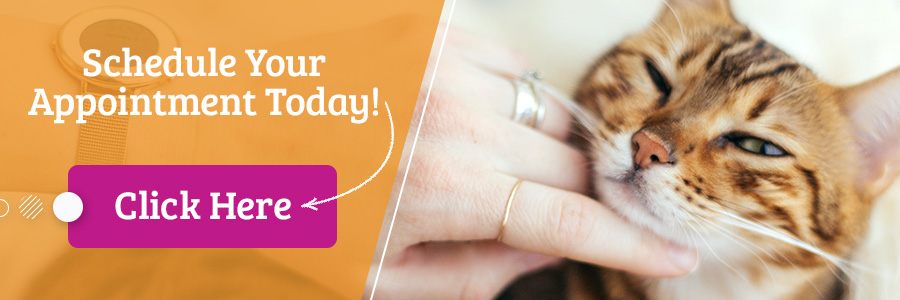Learn how to spot the signs and symptoms of feline diabetes.
Cats too — just like their owners — can develop diabetes, and in fact, feline diabetes is the second most common endocrine disorder in cats. Feline diabetes centers around insulin produced by the pancreas and its ability to properly regulate blood glucose levels in your cat.
When the pancreas is unable to produce insulin, blood sugar levels climb and diabetes is the end result.
Curious about feline diabetes? The Vet Set in Carroll Gardens is here to help diagnose and treat diabetes in your cat. Explore feline diabetes in today’s post.
What is Feline Diabetes?
Expanding on what we mentioned above, feline diabetes is a health condition where the body is unable to properly respond to or produce insulin, thus elevated and unhealthy levels of glucose circulate the body.
Cats are fueled by glucose, and a cat relies on the pancreas to produce insulin to attach to cells to signal the right time to absorb glucose. In a healthy cat with normal blood sugar levels, glucose is absorbed in fat deposits, the liver, and the muscles to fuel the body and lower the levels of glucose in the blood.
In type I feline diabetes, glucose levels are high, resulting from a decrease in the production of insulin, and type II feline diabetes occurs when the glucose levels are too high and the cells can not aptly respond to insulin. Compared to dogs who almost always suffer from type I diabetes, cats are more often diagnosed with type II.
Can feline diabetes go into remission?
While every cat is different, if caught early enough, it may be possible for a cat to go into remission and regulate blood sugar levels normally again, but this depends on the amount of damage the pancreas has incurred.
If diabetes is diagnosed and untreated in a later stage, the stress the pancreas endures may be irreversible and your cat may become dependent on insulin injections.
What causes feline diabetes?
While we don’t know for sure an exact cause of feline diabetes, overweight and obese cats are the most predisposed to developing this condition. Other causes may include pancreatitis, hyperthyroidism, and Cushing’s disease.
Signs of Feline Diabetes
If you begin to notice changes in your cat, it’s always important to monitor them and contact your vet who can provide better assistance. Signs of feline diabetes include increased urination, increased thirst, increased hunger, weight loss, and muscle weakness.
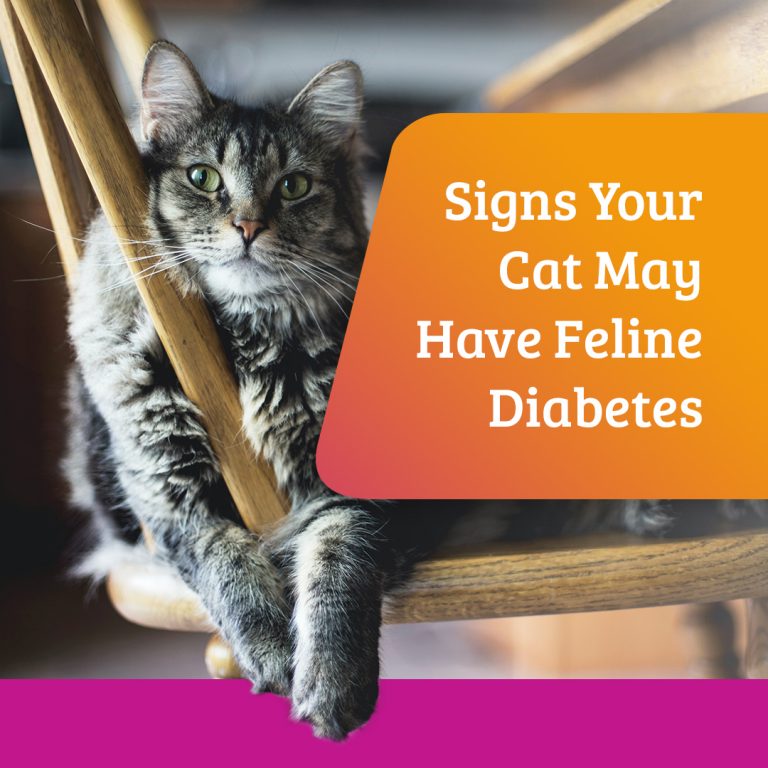
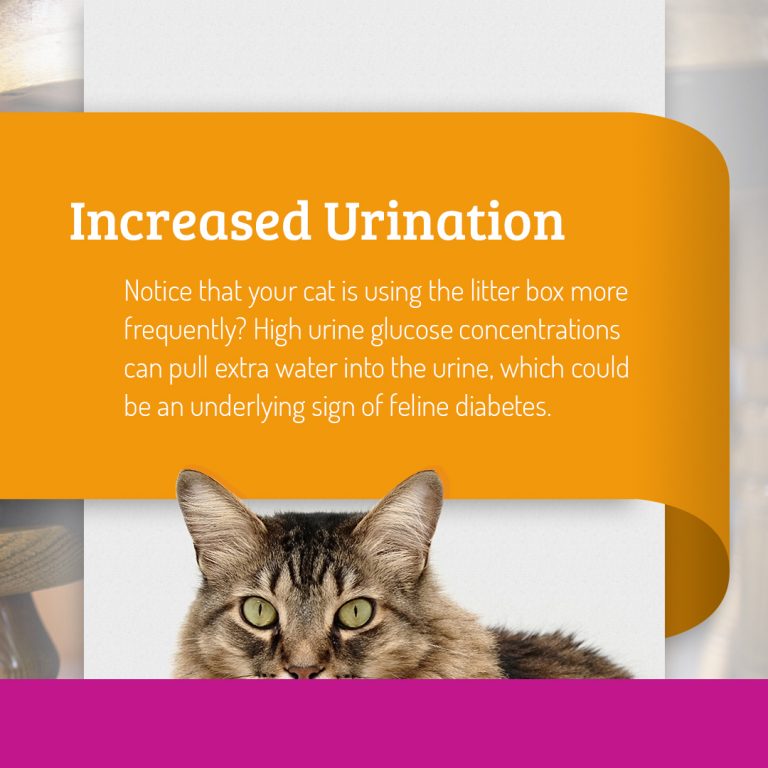
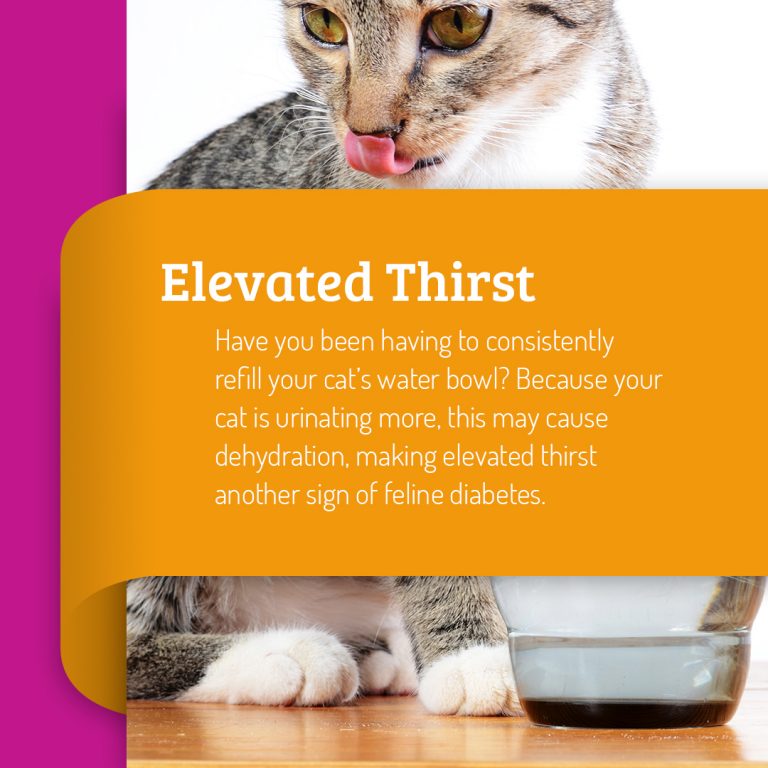
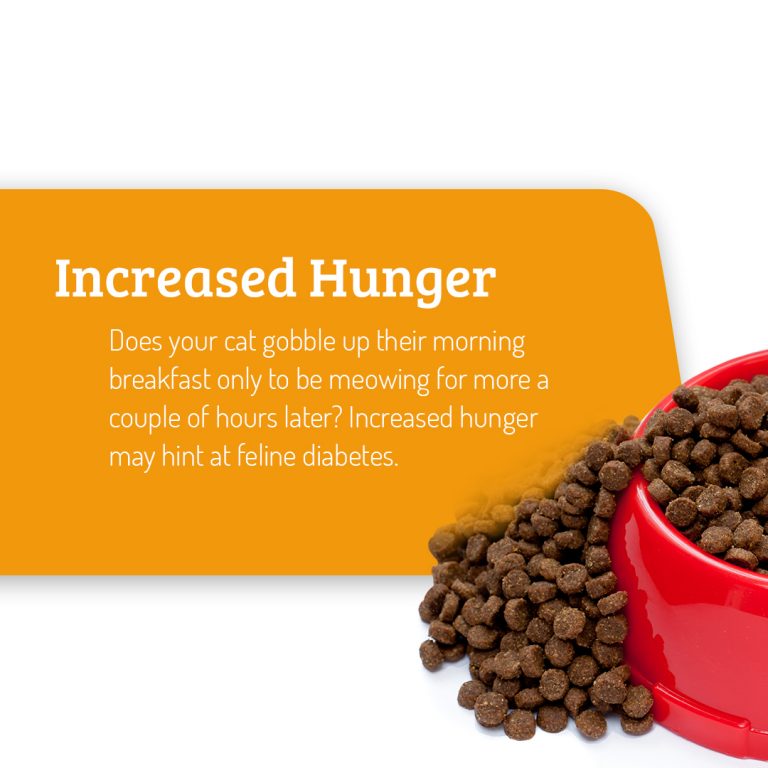
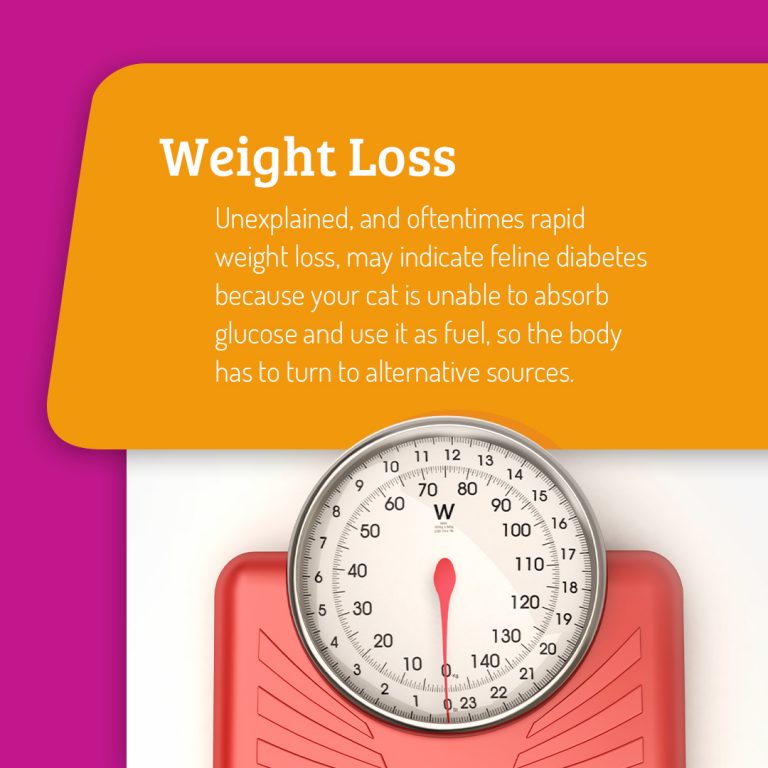
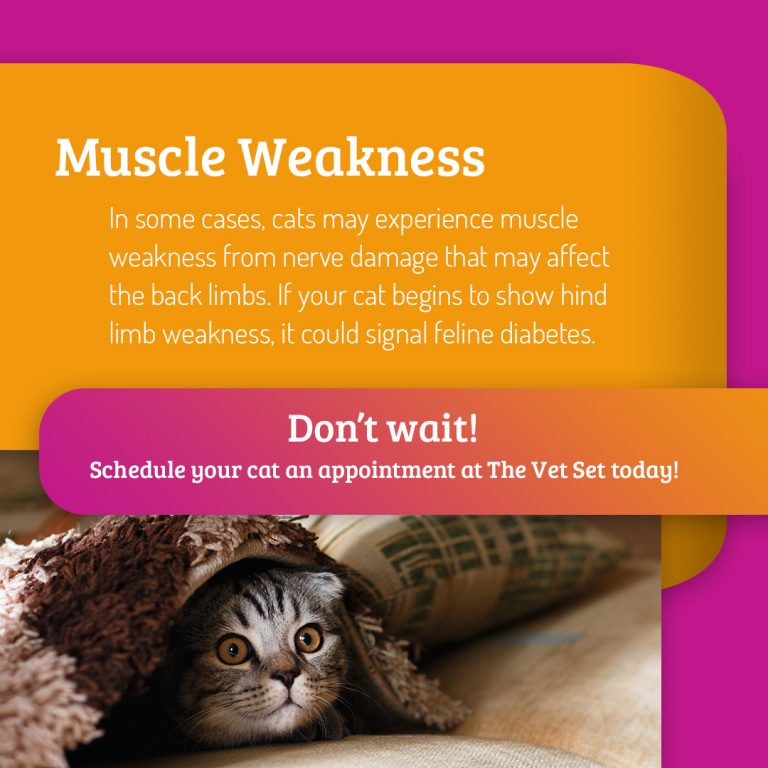
Cat Diabetes Diagnosis
To diagnose cat diabetes, blood and urine must be tested. In addition, your vet will ask you about any signs that may indicate diabetes.
Blood tests can be problematic because they’re not always straightforward — many times cats are stressed when they come into the vet clinic, which can raise their blood sugar levels. For a more conclusive result, vets will often look at the concentration of fructosamine. Fructosamine levels are typically elevated in cats with chronic diabetes and aren’t too affected by elevated stress levels, so they may be more trusted in determining blood glucose levels in your cat.
Treating Cat Diabetes
It’s important that once your cat is diagnosed with diabetes, you begin to treat their high blood sugar levels. The goal of treatment is to:
- Promote glycemic control
Improve signs of weight loss, increased thirst, urination, and hunger
Avoid low blood sugar drops
Balance blood sugar levels
Different Treatment Types
There are a few methods for treating and managing cat diabetes.
Insulin Therapy
The most common way to manage cat diabetes is with injectable insulin. This can be difficult at first because you have to give your cat an insulin shot, but most people get the hang of it right away.
Cat owners have a choice in different insulin injections, each performing for a different period of time. Your vet will help you establish what the right protocol is for your cat depending on the glucose curve — the high and low points of their blood glucose.
Nutrition Management
Because carbohydrates spike insulin levels, your vet may prescribe a low-carb diet for your cat to enhance healthy blood glucose levels.
If your cat is overweight, it’s important to help your cat tackle weight loss that can result from the disease. If your cat is underweight, you can help them achieve a healthy weight with small feedings multiple times a day, or allowing them around the clock food access.
The timing of meals is vital to cat diabetes management — many vets recommend feeding your cat at the time of an insulin injection to avoid harmful blood sugar drops. Because every cat experiences diabetes differently, it’s integral to develop a plan with your veterinarian.
We know that if caught early enough, cat diabetes may be able to go into remission, but if the case is progressive, there is no cure for cat diabetes. Well-managed diabetic care with insulin injections and thoughtful dietary measures grants your cat a good quality of life that can be long and healthy!
For more information on the approach we take at our Carroll Gardens vet clinic, connect with us today!

